Tech Report
Mixing highly filled compounds
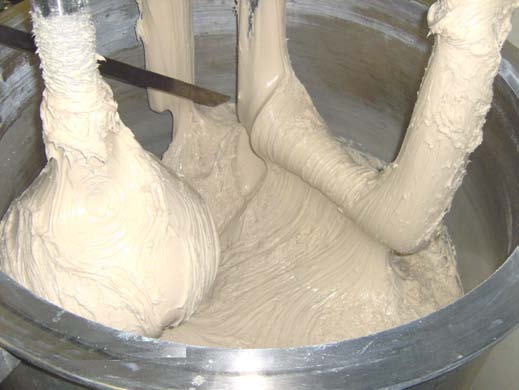
Technology Brief
Obtaining a good dispersion of fillers into a mixture is critical to end product quality. Highly filled, viscous compounds can be successfully prepared in multi-shaft or planetary mixers.
Modern day fillers
Historically, fillers were added to extend the use of a particular compound. Since they were generally low-cost ingredients in comparison to other raw materials in the formulation, fillers lowered a product`s cost per unit volume. Today, fillers serve a bigger role in the chemistry of almost all products. They deliver value and design benefits tailored for specific applications such as improved heat dissipation, increased stiffness and strength, added color and conductivity, or UV stabilization.
Typical filler materials include carbon black, graphite, boron nitride, fumed and precipitated silica, calcium carbonate, titanium dioxide, clay, glass and talc. The degree with which the filler is easily dispersed into liquid depends on its particle size and shape, hardness, density and any surface treatment which usually involves coating the filler particles with a fatty acid, such as stearic acid. This coating improves the flow properties of the powder and enhances its wetting characteristics, making the filler easier to handle, transport and disperse. Some filler manufacturers "pelletize" the powders into a bead or prill form to further improve handling and dispersibility.
Fillers must be well dispersed throughout batch. In fact, the level of filler dispersion is a critical factor affecting the physical properties and performance of the end product. The appropriate mixer must supply adequate shear to disperse any agglomerates and also provide enough torque to sufficiently turn over a batch, especially if the product is a highly filled, viscous formulation.
Considerations for mixer selection
Mixer selection is primarily based on viscosity and the level of shear required for a particular application. The starting viscosity of the resin(s) and other liquid components, the maximum viscosity reached by the mixture during processing and the final viscosity of the end product (if different from maximum viscosity) are all important considerations.
Shearing mechanism is typically provided by a high speed saw-tooth disperser blade, a rotor/stator assembly or a combination of these two. The hydraulic and mechanical shear generated by these mixers breaks down agglomerates of the filler component and produces a uniform dispersion throughout the batch. A slow speed anchor works in tandem with the high speed blades and promotes bulk flow while also scraping the vessel sidewalls and bottom for effective heat transfer.
Certain highly filled applications benefit from multiple saw-tooth blades mounted on a single disperser shaft because this configuration increases shear power, accelerates powder wet-out and reduces cycle times. However, when viscosities reach 500,000 cP or higher, planetary-style mixers perform better than agitators with a fixed axis of rotation.
In a planetary mixer, two or more blades rotate on their own axes as they orbit on a common axis. The agitators continually advance into the batch and contact fresh product all the time. The classic double planetary mixer (DPM) is a relatively low speed device; it relies on a product`s viscosity to impart shear as two identical blades move through the batch and push materials against the vessel surfaces and between the blades. Depending on the blade configuration, a DPM can handle viscosities up to 8 million cP.
Newer planetary mixer designs feature one or two stirrer blades (similar to those in a DPM) supplemented by one or two high speed disperser shafts which also revolve on their own axes while orbiting the mix vessel. These "hybrid" planetary mixers are ideal for processing viscous (~2 million cP), highly filled applications requiring ultra-fine dispersion quality.
Ross Mixers for Highly Filled Dispersions

Dual-Shaft Mixers
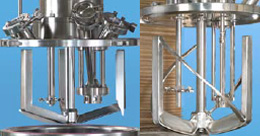
Triple-Shaft Mixers
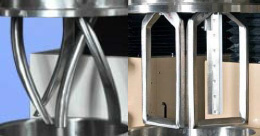
Double Planetary Mixers
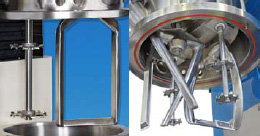
Planetary Dispersers
Sample Application: Carbon Black Dispersions
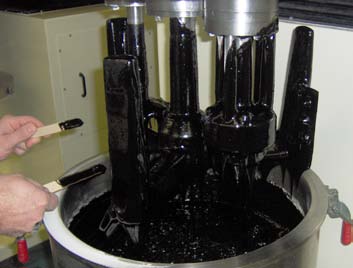
A worldwide chemical company uses a 500-gallon fixed-tank Ross Dual-Shaft Mixer to produce their specialty carbon black dispersions.
Pictured is a batch of carbon black slurry prepared on a pilot-scale demo mixer at the Ross Test & Development Center.